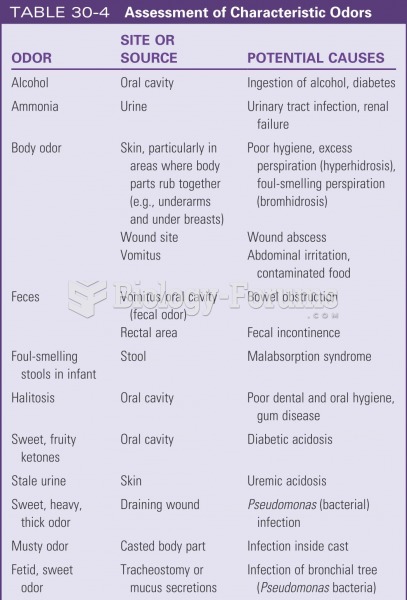Answer to Question 1
Correct Answer: 1,4
Rationale 1: When the client complains of pain, the nurse should always ask for a pain rating.
Rationale 2: Clients respond to pain differently. For example, this client may be trying to hide the intensity of his pain from his friend.
Rationale 3: Having the client go back to bed and asking the visitor to leave is punitive and could be interpreted as the nurse not believing the client. Being active and having diversions can help with pain management.
Rationale 4: The nurse should check to see when the client last had pain medication, what drug was given, what dose was given, and by what route it was administered.
Rationale 5: There is no reason to have another nurse assess the client. This action may imply that the nurse does not trust the client.
Global Rationale: When the client complains of pain, the nurse should always ask for a pain rating. The nurse should check to see when the client last had pain medication, what drug was given, what dose was given, and by what route it was administered. Clients respond to pain differently. For example, this client may be trying to hide the intensity of his pain from his friend. Having the client go back to bed and asking the visitor to leave is punitive and could be interpreted as the nurse not believing the client. Being active and having diversions can help with pain management. There is no reason to have another nurse assess the client. This action may imply that the nurse does not trust the client.
Answer to Question 2
Correct Answer: 3,5
Rationale 1: Allergy to amitriptyline is not a contraindication to use of fentanyl.
Rationale 2: Fentanyl patches are used for breakthrough pain and so are used with other pain medications.
Rationale 3: Giving fentanyl formulations to clients who are opioid nave can result in serious or fatal respiratory depression.
Rationale 4: These patches are dosed every 72 hours.
Rationale 5: Fentanyl has the same actions and adverse effects as morphine.
Global Rationale: Giving fentanyl formulations to clients who are opioid nave can result in serious or fatal respiratory depression. Fentanyl has the same actions and adverse effects as morphine. Allergy to amitriptyline is not a contraindication to use of fentanyl. Fentanyl patches are used for breakthrough pain and so are used with other pain medications. These patches are dosed every 72 hours.







